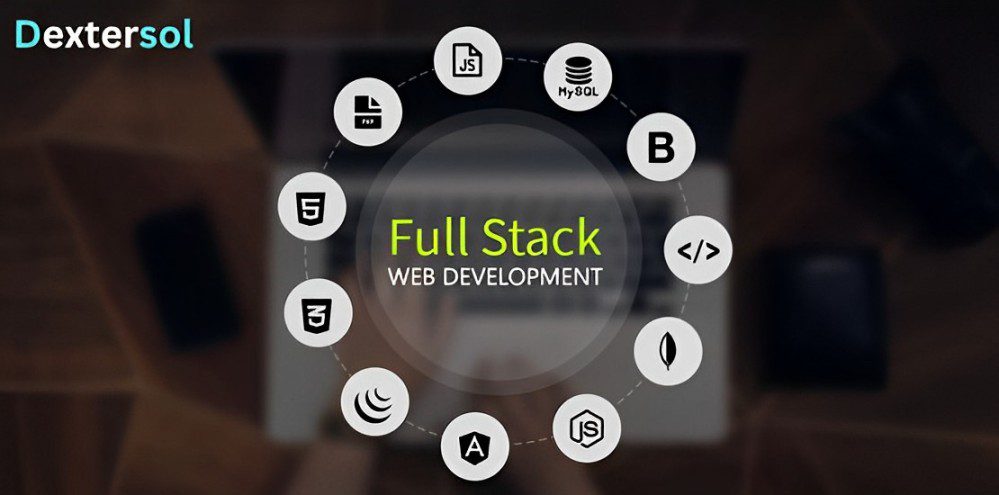Contents

What is a full stack Web development?
Full Stack Web Development is the process of developing all layers of a web application that is client-side or front-end development as well as server-side or back–end development. This part includes all of the elements a user can observe and work with directly, as well as the website structure, graphic design, and web interface elements created with the help of HTML, CSS, and JavaScript technologies.
A full-stack developer is proficient in both domains. Hence, they can simultaneously accomplish the entire application development process, from designing interface front ends to dealing with databases and servers. For these reasons, they are useful in rapidly growing websites requiring an all-in-one, full-stack leader who can resolve problems at different levels and mediate between the front and back end.
Benefits of full stack Web development
✦ Simplifies project creation by enabling one programmer to undertake frontend and backend tasks simultaneously.
✦ Eliminates the need to coordinate with several specialists, thus reducing total development expenses.
✦ Addresses communication and organizational challenges of the various segments within the system.
✦ Helps to detect and eliminate urgent issues much faster on each application layer.
✦ Enables more opportunities to change between tasks and fine-tune designs or features while constructing the project.
✦ Increase scalability by making client-server coupling very easy.
✦ Updates developers with a large span of skills, allowing them to set their eyes on newfound technologies.
What are the technologies used in full stack development?
Frontend Technologies
Frontend development more or fewer deals with treating a website’s visible and mouse-draggable portions. These are HTML for content arrangement/structure, CSS for content formatting, and JavaScript for content interactivity. Frameworks and Libraries of the modern era, like React, Angular, Vue, and JS, enhance the development work by presenting components and UI Rendering. Frameworks like Bootstrap and utilities like Tailwind CSS make the manual process of designing for the responsive web easier, while Webpack and Babel are great for asset management.
Backend Technologies
Backend development is the work on the server side, the database and the application logic. It is used for applications in Node.js, Python (Django, Flask), PHP (Laravel), Ruby on Rails and Java. MySQL, PostgreSQL, MongoDB, and similar are the data store solutions, while the backend solutions in the server-side programming range are ASP.NET Core, Ruby on Rails, Django, and similar. Routing and API are done by frameworks such as Express.js coupled with Node.js or Spring Boot if working with Java. Other more general tools include Docker for the ‘containerization’ of an application and Nginx or Apache for web servers.
What are full-stack development frameworks?
Full-stack development frameworks are recognized as systems containing a range of libraries and components that empower front-end and back-end development in a single framework. They reduce the chances of building an application from scratch and allow the developers to construct online services efficiently as they have in-built UI, routing, database, authentication, and API frameworks.
For instance, there is MEAN for JavaScript and the similar MERN. Other conventional frameworks are Django, written in Python, and Ruby on Rails, which has Ruby as the programming language; these two incorporate powerful back-end applications with moderate front-end features.
The Importance of Full-stack Development in Today's Digital World
Full-stack development remains relevant in today’s digital world since full-stack developers help design and develop enhanced, fluid, and highly scalable web applications to address current business requirements. As companies look to the web as the platform of choice for interacting with their customers, selling products, and managing operations, a full-stack developer offers the flexibility to design and manage both the front and back end effectively. Hence, their flexibility in managing all aspects of development makes project development fast, flexible in the face of changing demands, and cheaper.
In the growing era of digitalization, companies are looking for developers capable of handling more than one technology and synchronizing between the front and back end of the site or app. It also fosters innovation since full-stack development flexibility enables developers to choose innovation in the market to develop higher-quality applications with extended features. It keeps us relevant by achieving the key objectives of providing effective and easily navigable solutions while maintaining operational efficiency.
How to become a full stack developer?
To build a full-stack developer, one must create the foundation for front-end and back-end experiences. Education begins with front-end basics like HTML and CSS, further enhances to JavaScript, and goes ahead to frameworks like React, Angular, and Vue.js for better UI. Then, come to the front-end languages such as Node.js, Python, PHP, or databases such as MySQL/MongoDB. Learning more about version control tools such as Git and creating building projects while practicing the skills gained. Attending coding boot camp and contributing to open-source projects will add to it. Last, we must always get updated with the latest technology trends and frameworks to improve the organization’s suitability in the tech industry.